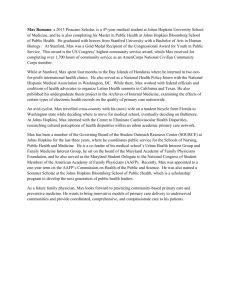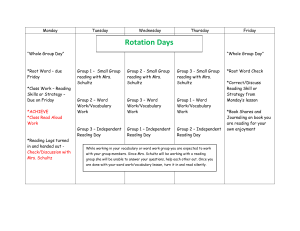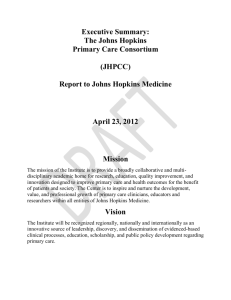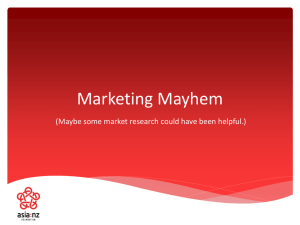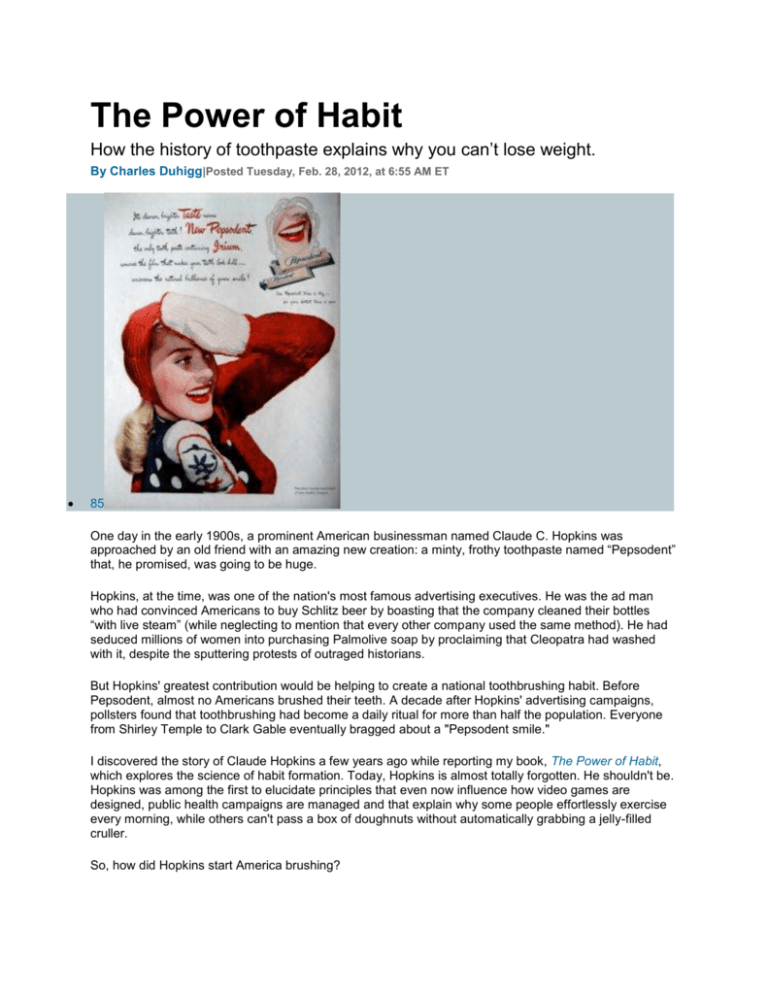
The Power of Habit
How the history of toothpaste explains why you can’t lose weight.
By Charles Duhigg|Posted Tuesday, Feb. 28, 2012, at 6:55 AM ET
85
One day in the early 1900s, a prominent American businessman named Claude C. Hopkins was
approached by an old friend with an amazing new creation: a minty, frothy toothpaste named “Pepsodent”
that, he promised, was going to be huge.
Hopkins, at the time, was one of the nation's most famous advertising executives. He was the ad man
who had convinced Americans to buy Schlitz beer by boasting that the company cleaned their bottles
“with live steam” (while neglecting to mention that every other company used the same method). He had
seduced millions of women into purchasing Palmolive soap by proclaiming that Cleopatra had washed
with it, despite the sputtering protests of outraged historians.
But Hopkins' greatest contribution would be helping to create a national toothbrushing habit. Before
Pepsodent, almost no Americans brushed their teeth. A decade after Hopkins' advertising campaigns,
pollsters found that toothbrushing had become a daily ritual for more than half the population. Everyone
from Shirley Temple to Clark Gable eventually bragged about a "Pepsodent smile."
I discovered the story of Claude Hopkins a few years ago while reporting my book, The Power of Habit,
which explores the science of habit formation. Today, Hopkins is almost totally forgotten. He shouldn't be.
Hopkins was among the first to elucidate principles that even now influence how video games are
designed, public health campaigns are managed and that explain why some people effortlessly exercise
every morning, while others can't pass a box of doughnuts without automatically grabbing a jelly-filled
cruller.
So, how did Hopkins start America brushing?
By taking advantage of a quirk in the neurology of habits. It wouldn't be until almost a century later that
medical schools and psychology labs would fully understand why habits exist and how they function.
Today, we can create and change habits almost like flipping a switch.
But there are historical outliers who seemed to intuitc or accidentally stumble into - these insights before
anyone else. Hopkins created a toothbrushing habit by identifying a simple and obvious cue, delivering a
clear reward and —most important —by creating a neurological craving.
And craving, it turns out, is what powers a habit.
When Hopkins signed on to promote Pepsodent, he realized he needed to find a trigger for its daily use.
He sat down with a pile of dental textbooks. “It was dry reading,” he later wrote in his autobiography. “But
in the middle of one book I found a reference to the mucin plaques on teeth, which I afterward called ‘the
film.’
"That gave me an appealing idea. I resolved to advertise this toothpaste as a creator of beauty.”
Soon, cities were plastered with Pepsodent ads. “Just run your tongue across your teeth,” read one.
“You’ll feel a film—that’s what makes your teeth look ‘off color’ and invites decay.”
“Note how many pretty teeth are seen everywhere,” read another. “Millions are using a new method of
teeth cleansing. Why would any woman have dingy film on her teeth? Pepsodent removes the film!”
All habits—no matter how large or small—have three components, according to neurological studies.
There's a cue—a trigger for a particular behavior; a routine, which is the behavior itself; and a reward,
which is how your brain decides whether to remember a habit for the future. When Hopkins identified
tooth film, he found a cue that had existed for eons. Moreover, the reward that Hopkins was promising
was hard to resist. Who doesn’t want a prettier smile? Particularly when all it takes is a quick brush with
Pepsodent?
Three weeks after the first Pepsodent ad campaign, demand for the toothpaste exploded. There were so
many orders that the company couldn’t keep up. In three years, the product went international. Within a
decade, Pepsodent was one of the top sellers around the globe.
“I made for myself a million dollars on Pepsodent,” Hopkins wrote a few years after the product appeared
on shelves. The key, he said, was that he had grounded his advertising campaign in two basic rules:
First, find a simple and obvious cue.
Second, clearly define the rewards.
Even today, Hopkins’s rules are a staple of marketing textbooks. They're cited in boardrooms, advertising
offices, and business school classrooms.
But that's not the full explanation of why Pepsodent was such a success. There's another rule that even
Hopkins, at the time, didn't understand.
***
The first time I spoke to Wolfram Schultz, a professor of neuroscience at the University of Cambridge, I
kept thinking of Arnold Schwarzenegger. Schultz is from Austria and sounds a lot like the Terminator, if
that cyborg had been a member of the Royal Society of science. The reason I sought out Schultz was
because his experiments, 80 years later, explained why Pepsodent became a hit and why so many other
habits seem so overpowering to the people under their sway.
Schultz's specialty is exploring how we learn. In particular, a few years ago Schultz became interested in
an eight-pound macaque monkey with hazel eyes named Julio. Schultz's assistants had inserted a very
thin electrode into Julio's brain that allowed them to observe the monkey's neuronal activity as it occurred.
One day, Schultz positioned Julio in a dimly lit room and turned on a computer monitor. Julio’s job was to
touch a lever whenever colored shapes appeared on the screen. If Julio touched the lever, a drop of
blackberry juice would run down a tube hanging from the ceiling and onto Julio's lips.
Julio liked blackberry juice.
At first, Julio was only mildly interested in what was happening on the screen. But once the first dose of
juice arrived, the monkey became very focused. As Julio came to understand that the shapes on the
screen were a cue for a routine (touch the lever) that resulted in a reward (blackberry juice), he started
staring at the screen with a laserlike intensity.
As Schultz monitored the activity within Julio’s brain, he saw a pattern emerge. Whenever Julio received
his reward, his brain activity would spike in a manner that suggested he was experiencing happiness. A
transcript of that neurological activity shows what it looks like when a monkey’s brain says, in essence, “I
got a reward!”
Schultz took Julio through the same experiment again and again. And as the monkey became more and
more practiced at the behavior—as touching the lever whenever Julio saw the shapes became a habit—
Schultz saw a neurological change occur. The monkey's brain began anticipating the blackberry juice.
Schultz’s probes started recording the “I got a reward!” pattern the instant Julio saw the shapes on the
screen, before the juice arrived:
In other words, the shapes on the monitor had become a cue not just for pulling a lever, but also for a
pleasure response inside the monkey’s brain.
Then Schultz adjusted the experiment. Previously, Julio had received juice as soon as he touched the
lever. Now, sometimes, the juice didn’t arrive at all, even if Julio performed correctly. Or it would arrive
after a slight delay. Or it would be watered down until it was only half as sweet.
When that happened, Julio would get angry or become mopey. And within Julio’s brain, Schultz watched
a new pattern emerge: craving. When Julio anticipated juice but didn’t receive it, a neurological pattern
associated with desire and frustration erupted. When Julio saw the cue, he started anticipating a juicefueled joy. But if the juice didn’t arrive, that joy became a craving that, if unsatisfied, drove Julio to anger
or depression.
This, scientists say, is how habits emerge, and why they are so powerful: They create neurological
cravings. Most of the time, these cravings emerge so gradually that we’re not really aware they exist. But
as our brains start to associate certain cues (a doughnut box!) with certain rewards (yummy jelly!), a
subconscious craving emerges. And so whenever we see the Dunkin' Donuts container in the break room
we start craving a donut—even if, just moments before, we weren't hungry at all.
***
Something similar, it turned out, was happening when people started using Pepsodent. About a decade
after Pepsodent went on sale, competing toothpaste companies launched a massive project to figure out
why it was such a success. Eventually they tripped over something interesting: the Pepsodent recipe.
Unlike other toothpastes of that period, Pepsodent contained citric acid, as well as doses of mint oil and
other relatively exotic chemicals. Pepsodent’s inventor had used those ingredients to make his toothpaste
taste minty and to make sure the paste wouldn't become gluey as it sat on shelves.
But those chemicals had another, unanticipated effect as well: They’re irritants that create a tingling
sensation on the tongue and gums.
When researchers at competing companies started interviewing customers, they found that people said
that if they forgot to use Pepsodent, they realized their mistake because they missed that cool, tingling
sensation in their mouths. They expected—they craved—that slight irritation. If it wasn’t there, their
mouths didn’t feel clean.
Claude Hopkins, it turns out, wasn’t selling beautiful teeth. He was selling a sensation. Once people
craved that cool tingling—once they equated it with cleanliness—brushing became a habit. Hopkins’
success was driven by the same factors that caused Julio the monkey to touch the lever.
As soon as other companies discovered what Hopkins was really selling, they started imitating him.
Within a few decades, almost every toothpaste contained oils and chemicals that caused gums to tingle.
Soon, Pepsodent started getting outsold. Even today, almost all toothpastes contain additives with the
sole job of making your mouth tingle after you brush.
Studies indicate that anyone can use this basic formula to create habits of her or his own. Want to
exercise more? Choose a cue, such as going to the gym as soon as you wake up, and a reward, such as
a smoothie after each workout. Then think about that smoothie, or about the endorphin rush you’ll feel.
Allow yourself to anticipate the reward. Eventually, that craving will make it easier to push through the
gym doors every day.
Want to craft a new eating habit? When researchers affiliated with the National Weight Control Registry—
a project involving more than 6,000 people who have lost more than 30 pounds—looked at the habits of
successful dieters, they found that 78 percent of them ate breakfast every morning, a meal cued by a time
of day. But most of the successful dieters also envisioned a specific reward for sticking with their diet—a
bikini they wanted to wear or the sense of pride they felt when they stepped on the scale each day. They
focused on that craving when temptations arose, cultivated it into a mild obsession. And, researchers
found, it crowded out temptations.
If you can identify the right cue and reward—and if you can create a sense of craving—you can establish
almost any habit.
“Consumers need some kind of signal that a product is working,” Tracy Sinclair, who was a brand
manager for Oral- B and Crest Kids Toothpaste, told me. “We can make toothpaste taste like anything—
blueberries, green tea—and as long as it has a cool tingle, people feel like their mouth is clean. The
tingling doesn’t make the toothpaste work any better. It just convinces people it’s doing the job.”
Excerpted from the book The Power of Habit by Charles Duhigg. Copyright © 2012 by Charles Duhigg.
Reprinted by arrangement with Random House, an imprint of The Random House Publishing Group, a
division of Random House Inc. All rights reserved.




